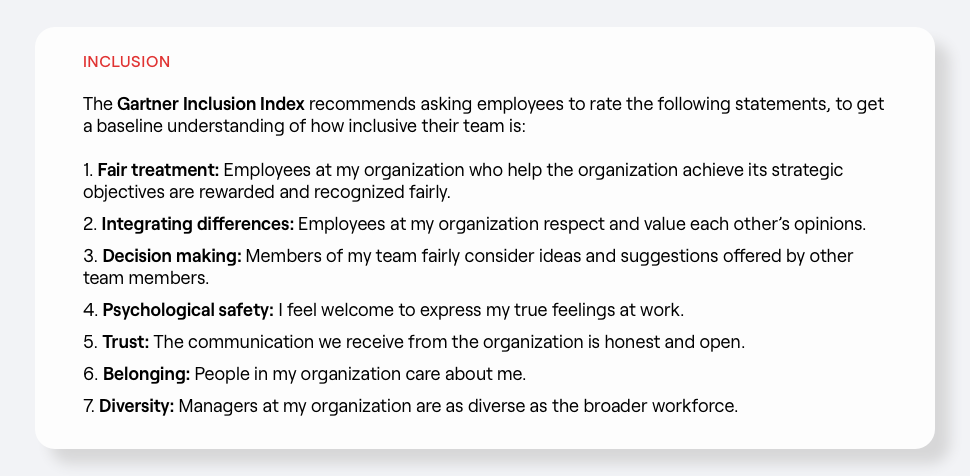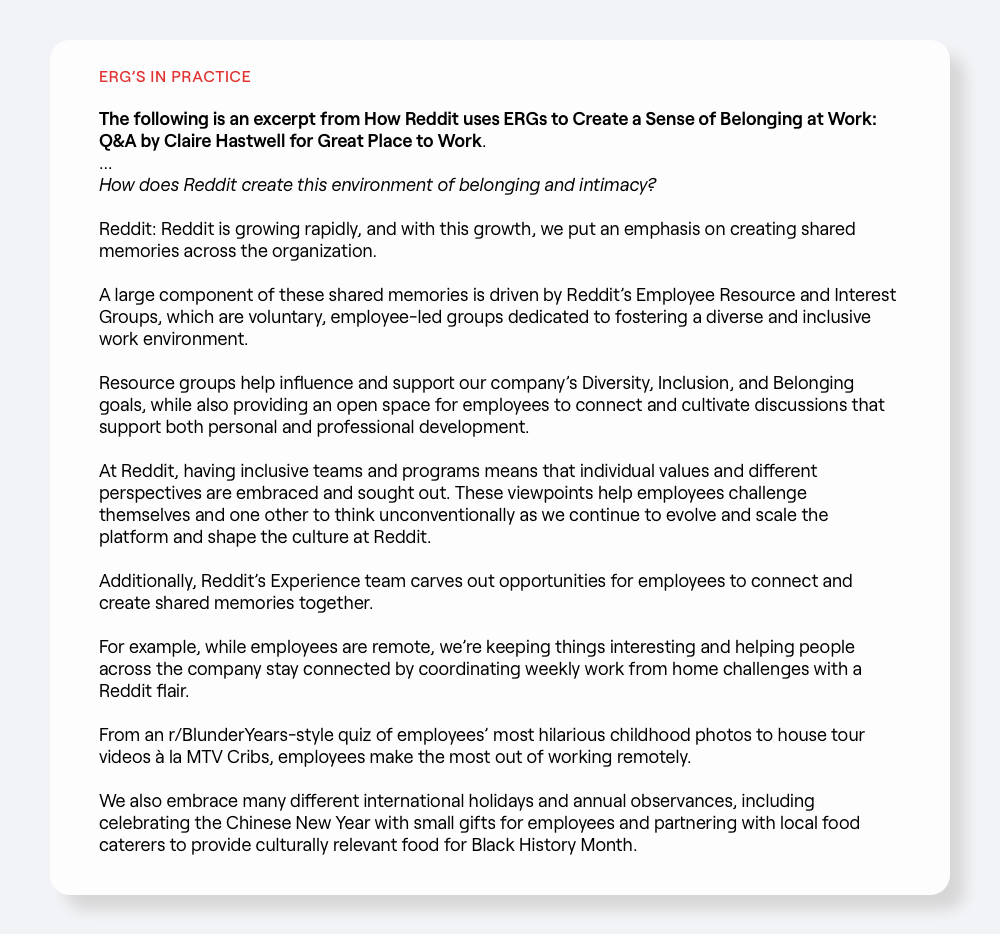In partnership with the CS community, we recently published an article on why Customer Success has the best opportunity to hire, retain, and promote more Black leaders. (You can read the full piece here.)
The short story is that Customer Success has a massive opportunity to be more diverse: for one, being successful in CS requires more broadly available core skill sets, like relationship building, communication, organization, resilience, creativity, and empathy. All of these skills can be acquired through non-traditional routes. Despite that opportunity, Customer Success—especially at the leadership level—is predominantly White.
The leaders we spoke to when writing this piece shed light on 3 main areas where companies can focus to take action on hiring, retaining, and promoting more Black leaders:
- Creating an inclusive environment for your employees, which can lead to increased retention
- Recruiting and hiring more Black employees
- Developing and promoting Black employees into leadership positions
In this newsletter issue, we will share how companies can create an inclusive environment for their Black team members. Most teams think they should start with #2 (hiring), but the reality is that creating an inclusive environment will help you hire more people from underrepresented backgrounds. Consider starting with your existing employees first.
(Before we jump in, a note about vocabulary. Most people we interviewed preferred ‘Black’ to describe the community because they said it is the most inclusive term. But here’s the rule of thumb, if you’re unsure of what someone identifies as, simply ask them!)
Creating an inclusive environment
For the past several years, DEI has been a hot topic. But the focus is too often on “how to get more people in the door” — with less attention paid to what companies can do to include people after they’re hired.
“You don’t have diversity if you don’t have inclusion.”
— Anthony Edwards, VP of Customer Success at TiLT
Our interviews identified a few of the best ways that companies can create an inclusive environment. But first, many folks noted that “inclusive” can be a nebulous word, and can only measure the inclusiveness of your workplace by asking employees what they think. There are plenty of good resources on this topic (see Culture Amp’s Inclusion Survey and HBR’s article on How to Measure Inclusiveness for example). Starting with an understanding of your employee’s perceptions will help you decide which of the initiatives below make the most sense for your team.

“Non-white people don’t assume the grass is greener at a different company. They do a lot more asking around about whether or not people feel good about themselves and feel safe at work.”
— Shadavia Jones, Manager - Customer Success Team at HubSpot
Here are some of the actions CS leaders can take to create an inclusive environment for immediate and longer-term change:
1. Make sure there are systems or resources in place so team members feel they can voice issues without fear of consequences.
For people at your company who don’t have a manager who looks like them: who do they go to to talk about their experiences with that manager? Be sure there are systems in place that allow team members to feel safe, heard, and know that something will be done when they talk about hard topics like microaggressions in the workplace. (There are tools available that help facilitate anonymous feedback and action from leadership—All Voices is an example.)
“Creating a sense of belonging at work is the outcome of three mutually reinforcing attributes. Workers should feel comfortable at work, including being treated fairly and respected by their colleagues. They should feel connected to the people they work with and the teams they are part of. And they should feel that they contribute to meaningful work outcomes.”
— Deloitte Insights, Belonging
2. Sponsor an Employee Resource Group
Employee Resource Groups (ERGs) — groups that give employees safe spaces to bring their whole selves to the table and help in personal or career development — help bring people together to share their experiences, create connections, and together they often work to tackle company-wide challenges.
Leaders can support these groups in two notable ways: helping ERGs get the senior leadership commitment they need (if they don’t already have it), and advocating for group members to be paid for their time and effort in affecting company policy and creating change. (LinkedIn recently shifted to this model; Axios wrote about their model here which others can borrow from.) Leaders can also advocate for wider participation with the group.
ERGs tend to be employee-lead, but CS leaders can help to:
- Encourage their team members to start an ERG with resources on how to get started, and by connecting them to people in other companies who lead ERGs, and
- Help get executive buy-in (and ideally sponsorship) for the ERG.

3. Educate your organization
Companies need to educate their employees at all levels—leadership included—about:
- Becoming aware of privilege, and how to use privilege for good
- Understanding bias and how it shows up
- What microaggressions are and how to address them
- The value of building a diverse network and how people can do that
Hiring third-party agencies for this type of education will help make sure you’re hitting the right points. And to take it a step further, look to hire agency owners from underrepresented backgrounds.
This education is not one-and-done of course—regular training will serve as helpful reminders to self-reflect, look out for bias, and find ways to use privilege for good.
Note: One resource we heard was especially helpful was this training: But I’m Not a Racist… Right? At the company where this was used, everyone took the quiz.
“We should be challenging White leadership to be aware when they are in spaces that lack diversity to think about how they can impact those from a proactive perspective. And if they can't change the make-up of the room, how do they put processes in place to break the cycles and practices of "doing it the ways you've always done?" How do White people in all White spaces put a reflective lens on their own thinking and decision-making for the good of the business and inclusivity? How can leaders use advisory panels or reverse-mentoring as a way to get more diverse points of view in decision-making?”
— Keishla Ceaser-Jones, Director of Partner Success & DEIB Leader
4. Create opportunities for Black employees to be visible
Sometimes companies do a lot of work to get candidates in the door — but then those people aren’t “visible” within the organization. They’re not given the opportunity to take the lead on projects or give presentations. Managers at any level can look out for this and help hand off big projects, training, or speaking opportunities (even at the team level).
“You don’t want it to be a token gesture, like ‘Go present for me at Gainsight’ so we can show others who is representing our company… But I do think there are a lot of opportunities for companies to have people of color present internally and push them to the forefront so it becomes common to see people of color leading and presenting.”
— Charles Coaxum, VP of CX at Kenna Security (recently acquired by Cisco, 7/2021)
This week's top posts
ALIGNMENT
Actually Influencing the Product Roadmap as a Customer Success Leader
CS and Product Management generally don't work well together. How do we know? We interviewed dozens of Product Management leaders at companies of all sizes and asked them! In this handbook, we summarize how CS can improve the relationship and results with Product, including understanding how Product makes roadmap decisions, training CSMs to collect better data about problems by asking the right questions, organizing problem themes across all requests, and more.
LEADERSHIP
Don't Assume Consensus In The Absence of Objection
In this piece, Candost Dagdeviren offers a timely reminder that silence does not always mean people are agreeing with you. Leaders need to make decisions with the understanding of how different their team members are—some are loud and will readily share their opinions, while others won’t speak unless called on, or “they [may] think everyone will find them stupid if they share.” Assuming consensus because of long awkward silences during virtual meetings is a poor leadership move.
CAREER
What It Really Means to be a Manager, Director, or VP
If you’ve ever thought the lines between Manager, Director, and VP seem blurry, here’s an excellent article by Dave Kellogg to bring some clarity to the distinction. He said “The biggest single development issue I’ve seen over the years is that many VPs still think like directors” and Dave goes on to define exactly what makes one VP good and another great.
SURVEY
10 Things That Are Changing Now in Customer Success
Watch Nick Mehta’s SaaStr presentation about the evolution of CS and the laws you’ll need to abide by to “make it” in this space. His speech is packed with insights, specific examples, and things to think about as we head in 2022.

Success Happy Hour is a weekly newsletter for Customer Success leaders. Each week we feature one digestible piece of advice or a framework from a top Success leader, along with the best resources from that week. Subscribe here.

Submit a comment